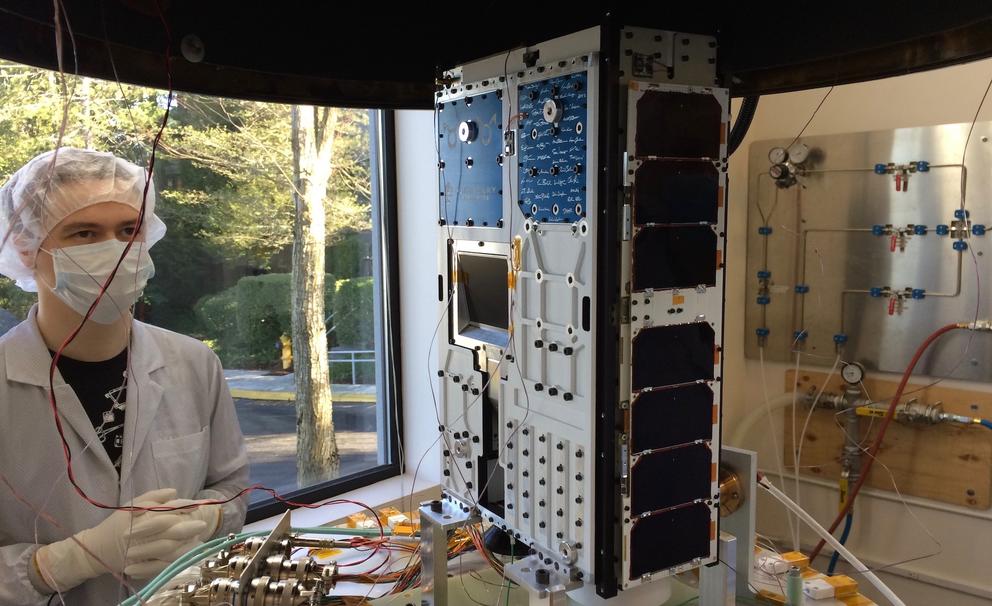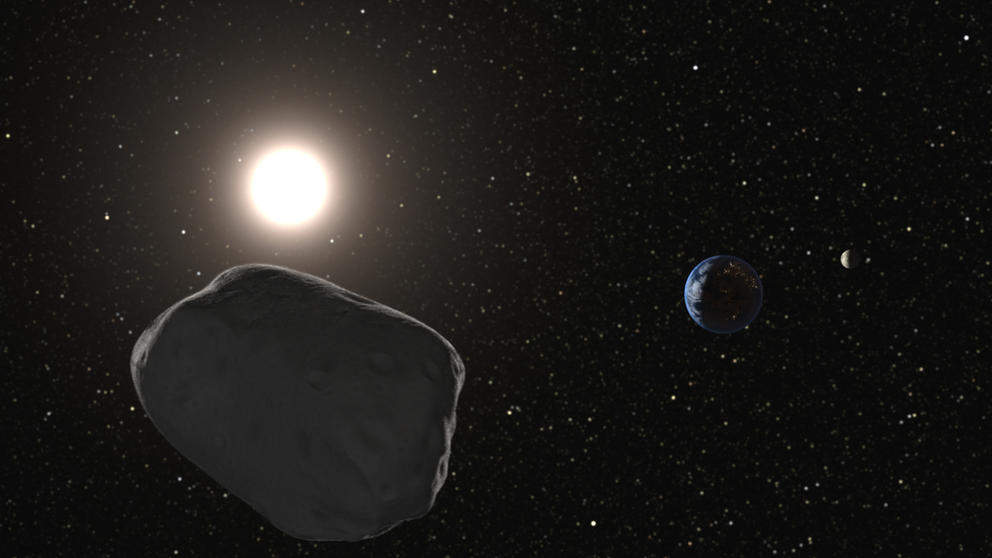The asteroid is roughly spheroid in shape. Slightly less than one-third of a mile in diameter. Fairly smooth with a ridge along its equator. Fast spinning. Low gravity. Possibly filled with clues about the creation of our solar system.
You also might be interested to know that Bennu has a 1-in-2,700 chance in hitting the Earth in the late 22nd century. It would not destroy the Earth, but you definitely don’t want to be in any city that the asteroid might strike, said Mike Nolan, science team chief for the Osiris-Rex probe that is heading there.
More importantly for businesses in Seattle and elsewhere involved in space, the so-called near-Earth asteroids like Bennu could be prime mining spots for precious metals for Earth and precious water for rocket fuel in outer space. And a Redmond company, Planetary Resources, hopes to be at the forefront of those mining efforts.
For eight years, Planetary Resources has been researching near-Earth asteroids — there are perhaps 15,000 of them — designing space probes and prospecting for financial backers to mine asteroids.
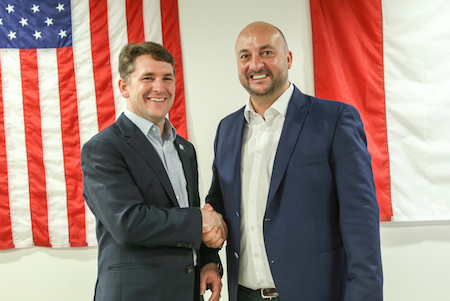
Longtime space and tech entrepreneurs Peter Diamandis and Eric Anderson founded Arkyd Astronautics in Redmond in 2009 with a name fuzzy enough to keep its asteroid-mining mission a secret. In 2012, though, the company changed its name to Planetary Resources and announced that it plans to mine water and rare minerals from asteroids.
Chris Lewicki, a veteran of NASA, is the venture’s president. Lewicki worked on a NASA probe that flew by the 433 Eros near-Earth asteroid in 1998 before orbiting and landing on it permanently in 2000 and 2001. He also was NASA’s flight director on two Mars rover missions and the surface mission manager for another that landed on Mars to hunt for signs of water and microbial life. And he ended up with an asteroid named after him — 13609 Lewicki.
In an interview late last year with Crosscut, Lewicki said that Diamandis’ and Anderson’s vision originally struck him as crazy, but he quickly bought into the concept. “It is realistic, but something you think [about achieving] in the long term,” Lewicki said.
Even as interest in space exploration has attracted attention from some of the world’s most high profile entrepreneurs, including Amazon’s Jeff Bezos, there has been considerable speculation about whether asteroids offer real resources that could bring financial rewards. Lewicki declined to discuss Planetary Resources’ finances and budget.
However last month, Geekwire reported that Planetary Resources missed a fundraising deadline and appears to have had some people leave the company. No information was available on financial figures related to those missed deadlines.
In 2014, Planetary Resources arranged to send its first satellite Arkyd-3 — a 9-pound package of control and communications devices the company wanted to test — into space as part of a bigger payload on a private rocket headed to the International Space Station. But the rocket blew up a few seconds after launch. A second Arkyd-3, called Arkyd-3R, successfully made it to space in a subsequent launch in 2015.
On Jan. 9 of this year, the more-advanced, cereal box-sized Arkyd-6 launched as part of the payload of another rocket that took off from India.
It is supposed to be the first of several Planetary Resources satellites orbiting the Earth to collect spectral information from asteroids and to earn the company some money by collecting spectral data from the Earth for natural resources, forestry, water quality and agricultural purposes. “We like to test our ideas incrementally,” Lewicki said in the interview late last year.
Geekwire reported that Planetary Resources apparently plans to sell some of Arkyd-6’s imagery and data to fill that revenue gap.
In addition to interest from investors, Planetary Resources’ boundary-pushing projects have caught the attention of other companies. International engineering giant Bechtel Corp agreed in 2013 to partner with Planetary Resources on long-term goals. Another company will help Planetary Resources put three-dimensional printers into space; the 3-D printers could use ground-up asteroid rocks as dust-like raw materials to build equipment in outer space.
So why does Planetary Resources want to mine asteroids?
One reason is because of the presence of lots of platinum, gold and other rare metals if you pick the right asteroids.
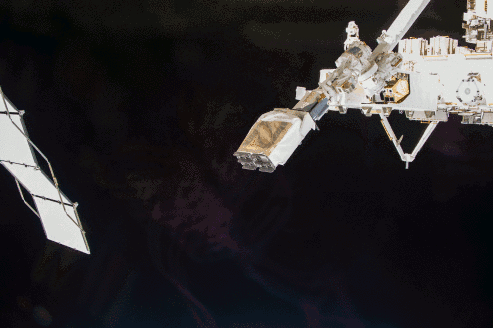
But the most immediate reason is water — that is, water as a raw material for spaceship fuel.
A huge expense in rocketing to Mars or elsewhere in the solar system is fuel. And getting lots of fuel out of the Earth’s gravity is highly expensive. The plan is to take mammoth chunks of ice from an asteroid and send them to an outer space facility that will melt the ice and zap the water into hydrogen and oxygen. A spacecraft would pick up that hydrogen to use as fuel to reach Mars or the Mars-Jupiter asteroid belt.
So, Planetary Resources’ first priority is to find and mine that ice while building water-zapping and refueling stations in outer space. Mineral mining will come later.
The company’s plan is to send its first scouting probes in 2020 to near-Earth asteroids, some of which are already on a list of possible targets.
How does it pick targets? For one thing, it wants to stay away from the ones going the fastest around the sun because the mining probe would need more fuel to catch up, which displaces room in the small spacecraft for mining equipment. Ditto on the super-fast spinners. And an asteroid less than 1,000 feet in diameter is not a good prospect to hold enough water to be worth mining.
Our solar system has between 1.1 million and 1.9 million asteroids from 6 feet in diameter to 587 miles in diameter, mostly between the orbits of Mars and Jupiter. About 15,000 are near-Earth asteroids, ones whose orbits bring them relatively close to our planet.
Platinum is the mineral that comes up the most as causing asteroid miners and their financial backers to salivate over potential riches.
Each year, about 200 tons of platinum worth about $6 billion are mined annually on our planet.
An asteroid with a platinum core worth nearly 1,000 times as much — $5.4 trillion — passed close by Earth in 2015, about six times the distance to the moon. Another asteroid in Venus’ general orbit has been analyzed and found to hold about $8 trillion in platinum, $8 trillion in iron and $6 trillion in cobalt.
Nickel and iron are more mundane minerals found on asteroids. NASA plans to launch a probe in 2022 to arrive in 2026 at Massachusetts-sized 16 Psyche in the asteroid belt between Mars and Jupiter. Psyche is estimated to hold $10,000 quadrillion worth of iron and nickel plus unknown amounts of platinum and gold — making that asteroid capable, by some accounts, of destroying the Earth’s economy if mined rampantly.
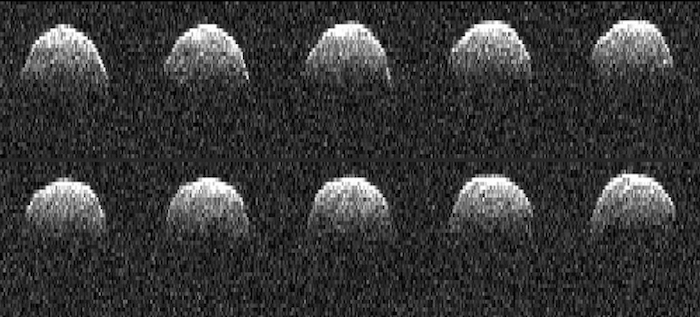
Meanwhile, that little NASA spacecraft — Osiris-Rex — should reach the small, roundish Bennu asteroid next year and, in 2020, collect some of its gravel for return to Earth. If all goes well, scientists should get the samples back to Earth in 2023.
Osiris-Rex is the third space probe to collect samples from an asteroid, with Planetary Resources’ craft to be the fourth. The early Eros probe did not collect samples.
The first to collect samples was a small Japanese probe called Hayabusa, launched in 2003 to reach an asteroid called 25143 Itokawa, which is less than half of Bennu’s size and is shaped like a deformed peanut. Communications breakdowns, thruster problems and several engineering glitches plagued this mission. Intended to just hover slightly above the asteroid’s surface, the probe actually landed on Itokawa. It collected about 1,500 grains of dust over about two weeks, returning to Earth in 2010.
In 2014, the Japanese launched the Hayabusa 2 probe on a similar mission to land on an asteroid in June or July to collect samples and return to Earth in 2020.
NASA’s Osiris-Rex, launched in September 2016, then spent a year maneuvering for the right angle to use the Earth’s gravity to whip it toward Bennu. It is scheduled to start collecting samples there in 2020 — the same year that Planetary Resources hopes to launch its first asteroid probe.
The top lesson that NASA learned from the first Hayabusa mission is that the Japanese probe spent too short of a time exploring and collecting samples, said Mike Nolan, science team chief for the Osiris-Rex project. Osiris-Rex is scheduled to spend 505 days moving around Bennu to map and analyze its surface. “We want to stay there a long time. We don’t know what we’ll see when we get there,” Nolan said.
Another lesson is that maneuvering a small probe in low gravity is difficult. “The rockets,” Nolan says, “are so much more powerful in low gravity. It’s easy to overshoot.”
As a likely preview of what Planetary Resources’ probe will do, Osiris-Rex will slowly descend to Bennu’s surface to hover just above the ground, an 11-foot arm extending out. The arm will shoot a brief blast of nitrogen to knock some dust off of Bennu’s surface and capture it. The mission hopes to collect up to 4-5 pounds of dust for the three-year trip back to a landing in Utah in 2023.
A white paper by 30 scientist at a 2016 asteroid mining conference in Luxembourg expanded on the lessons from the Hayabusa mission — mainly that Newton’s Third Law (that for every action, there is an equal and opposite reaction) runs amok on a miniature planetoid with almost no gravity. An imprecise thruster burst could knock a mining probe back into space. Another wrinkle is that remote control becomes difficult, if not impossible, because of the length of time it takes radio waves to reach Earth and return with any instructions. The cycle for a help message and a signal with a fix could be a 30 minutes or longer.
The white paper said: “It is not trivial to write the control systems software for this situation. There will be unexpected situations, avalanches, who knows? The control system software must be prepared for everything, literally.”
So, is there actually money to be made in mining asteroids — enough to justify investing in such a venture?
Wall Street giant Goldman Sachs and the tiny country of Luxembourg, for example, think there is. But asteroid mining is a long-term gamble — maybe taking decades and billions of dollars to recoup investments.
Take a look at Osiris-Rex as a baseline, which is an $800 million, seven-year scouting mission to recover dust.
Planetary Resources is scheduled to send out its own scouting missions in 2020. Then add the costs and time for missions to actually extract frozen water and to set up remote-controlled hydrogen fuel stations in outer space. Then add in the costs and lengths of missions to actually mine an asteroid for precious metals in bulk to return to Earth.
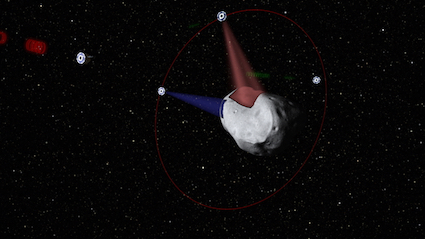
Planetary Resources’ Lewicki said, “A lot of people in the world do see this as a risk. … There is a category of investor who see this as a tremendous opportunity.” He compared today’s interest in asteroid mining to 19th century businessmen investing in Standard Oil when it started up. Planetary Resources has numerous investors, including a few billionaires such as Google co-founder Larry Page and former Microsoft executive Charles Simonyi, according to Geekwire.
In April, Goldman Sachs issued a 98-page report on investing in private space ventures, generally saying this field has a lot of untapped economic potential. The report had three pages on asteroid mining.
“Space mining,” the paper said, “could be more realistic than perceived. … Water is easily converted into rocket fuel, and can even be used unaltered as a propellant. Ultimately being able to stockpile the fuel in [a space fuel station orbiting the Earth] would be a game-changer for how we access space. And platinum is platinum.” While the paper noted that asteroid mining could “crater” platinum prices, it also noted that other minerals could be used in powder form to fuel 3-D printer manufacturing.
Goldman Sachs’ report said: “Asteroid mining could very quickly supply an emerging on-orbit manufacturing economy with nearly all the raw materials needed.” And it added, perhaps somewhat more cautiously: “Given the [huge capital expenses] of mining operations on Earth, we think that financing a space mission is not outside the realm of possibility.”
Goldman Sachs declined to make the analyst who wrote the report available for an interview. However, that analyst, Noah Poponak, said in a Goldman Sachs podcast: “There are tons of risk in something this technologically sophisticated.”
Meanwhile, the nation of Luxembourg has invested roughly $29 million in Planetary Resources, viewing the space industry and asteroid mining as a logical extension of its current role as a financial center, tax haven and major telecommunications investor, especially in satellite communications. Luxembourg got into financing satellite communications in 1985.
“By courting asteroid miners before anyone else takes them seriously, it may very well end up doing the same thing for the commercialization of space,” the London-based Guardian newspaper wrote. In fact, Luxembourg has 200 million euros (roughly $238 million) set aside to invest in the private space industry, according the Guardian. The country has involvement in roughly 70 space-oriented companies, according to Bloomberg News, including Deep Space Industries, a California company that plans to explore and mine asteroids on roughly the same schedule as Planetary Resources. Deep Space Industries did not reply to email requests for an interview.
On the other hand, a 2016 Massachusetts Institute of Technology report contended that asteroid mining — “a highly speculative technique — should be considered strictly a long-term range venture.” The MIT report speculated it could take until at least 2045 for asteroid mining to hit a prosperous level.
“The remoteness of these facilities will make them difficult to create and maintain, requiring significant advances in robotic technology,” the report said. “Asteroid mining is a technology in its earliest stages with massive start-up costs.”


